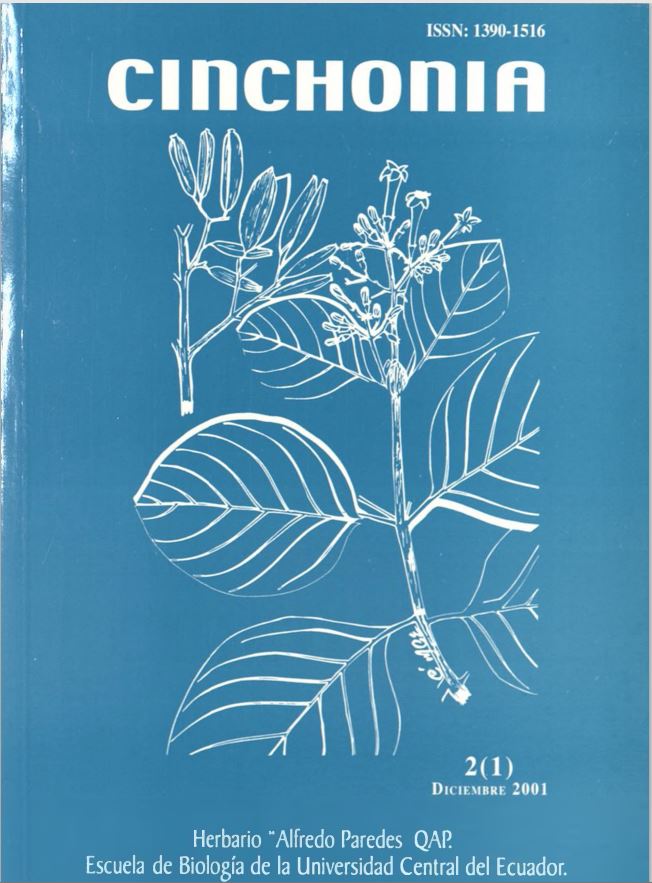CARACTERIZACIÓN BOTÁNICA DE LA COMUNIDAD PLAYA DE ORO, CUENCA DEL RÍO SANTIAGO, PROVINCIA DE ESMERALDAS.
Main Article Content
Abstract
Research was carried out in the watershed of the Santiago River and the buffer zone of the Playa de Oro community in the Ecuadorean province of Esmeraldas, Cantón Eloy Alfaro, Parroquia Luis Vargas Torres, ca. 78°48'W00°53'N and at elevations of 120-180 m. The life zone is Moist or Wet Tropical Forest. I sampled vegetation in 0.1-ha transects, each composed of 10 subtransects of 50 x 2 m), in slightly disturbed forest at three sites on the Loma el Botadero. General collections were made in the surrounding secondary forest and homesites. Each transect was inventoried for all stems =2.5 cm dbh. At least two voucher specimens were collected for each species, pressed and field-preserved in alcohol, and later dried and mounted in the QAP Herbarium in Quito. Abundance data were used to calculate a diversity index and presence/absence data were used to calculate a similarity index. 30 Cinchonia Vol. 2. 01. 2001 Sample A contained 66 plant species, registering moderately diverse on the diversity index (38.3). Wettinia quinaria was the most common species, followed by Conostegia cuatrecasii. Sample B contained 43 species and scored low on the diversity index (2.2). Wettinia quinaria was the most common species, followed by Apeiba membranácea. Sample C contained 66 species, with a moderately diverse score of 3.5 on the diversity index. Wettinia quinaria was the most common species, followed by Pourouma bicolor Mart. ssp. chocoana. The three samples never shared more than 30% of their species, indicating floristic variation over short distances. The most common species in the three combined samples is Wettinia quinaria. It is the striking dominance of this species that causes the low diversity found in these forests, less than half that of comparable sites in Amazonia. During the study 13 endemic species were recorded.

